A couple of weeks back, Intel finally showed off their range of graphics cards… except not exactly. Intel revealed only the mobile lineup of their graphics cards for now, with desktop graphics cards teased but ultimately still not made official for now. And yet, despite launching their mobile lineup of GPUs, it still seems as though that they’re… missing?
What exactly did Intel show off?
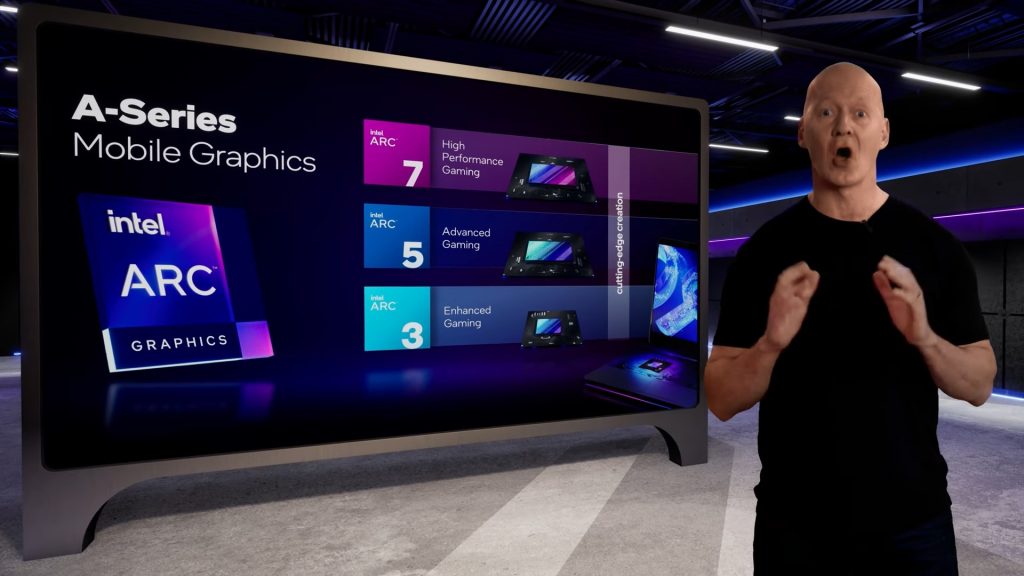
Let’s first talk about what Intel did announce. They introduced the Intel Arc mobile lineup of graphics cards, split into Intel Arc 3, Intel Arc 5 and Intel Arc 7, with each jump in number representing a jump in performance as well. Intel Arc 3 would be targeting the ultra thin and ultra compact laptop that focuses on productivity but still needed a discrete graphics card for some heavier productivity workloads. Intel Arc 5 and Intel Arc 7 GPUs meanwhile will be going towards more powerful gaming laptops.
Going into a bit more detail, the Intel Arc 3 will be split into two models, the Intel Arc A350M and Intel Arc A370M. Both feature Intel’s Xe-Cores, the base of Intel’s Xe HPG microarchitecture powering Intel’s graphics cards, with the Arc A350M having 6 Xe-Cores while the Arc A370M has 8 of them. Similarly, the Arc A350M has 6 ray tracing units while the Arc A370M has 8 ray tracing units, as each Xe-Core has its own ray tracing unit. Both Arc 3 GPUs have 4GB of GDDR6 VRAM with a 64-bit memory bus width. The lower end Arc A350M has a 1150MHz clock speed with power use between 25-35W, while the Arc A370M has a 1550MHz clock speed with graphics power between 35-50W.
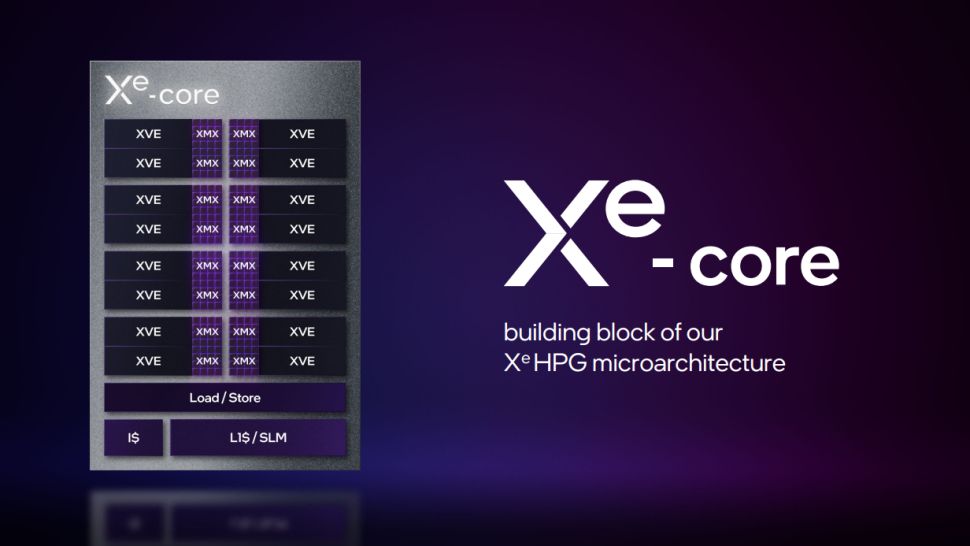
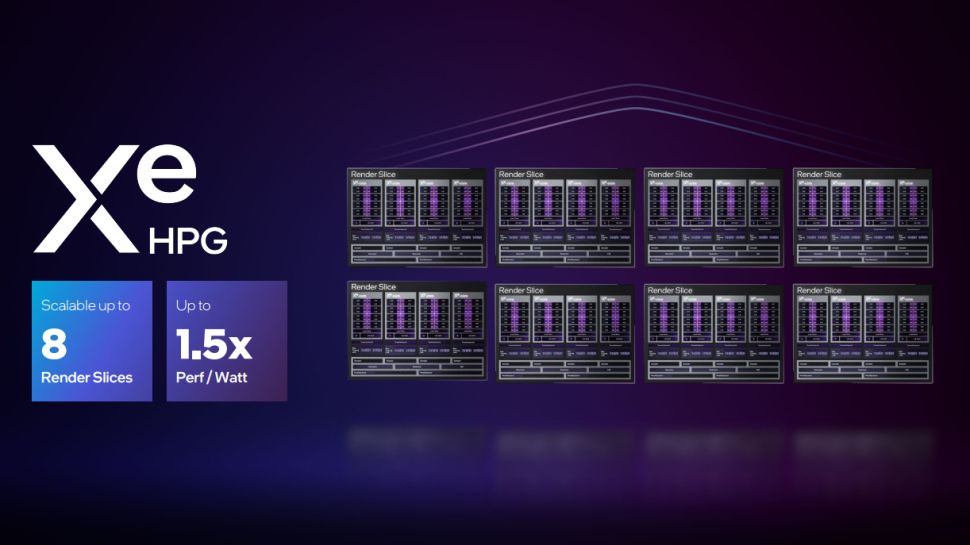
As for the more powerful Intel Arc 5, there’s just one entry in this segment, the Arc A550M. It has twice the Xe-Cores and ray tracing units compared to the Arc A370M at 16, as well as twice the memory and bus width at 8GB of GDDR6 VRAM with a 128-bit memory bus width. It’s clocks a little lower though at 900MHz, and uses between 60-80W of power.
The highest end Arc 7 meanwhile are the most powerful on the stack, with the Arc A730M and Arc A770M GPUs. The former has 24 Xe-Cores and ray tracing units, with a clock speed of 1100MHz. It uses 12GB of GDDR6 VRAM and has a 192-bit memory bus width, with a rated TGP between 80-120W. As for the most powerful mobile GPU Intel has ever made, the Arc A770M has 32 Xe-Cores and ray tracing units, a 1650MHz clock speed, 16GB of GDDR6 VRAM and a 256-bit bus width. It’s also the most power hungry, with a TGP between 120-150W.
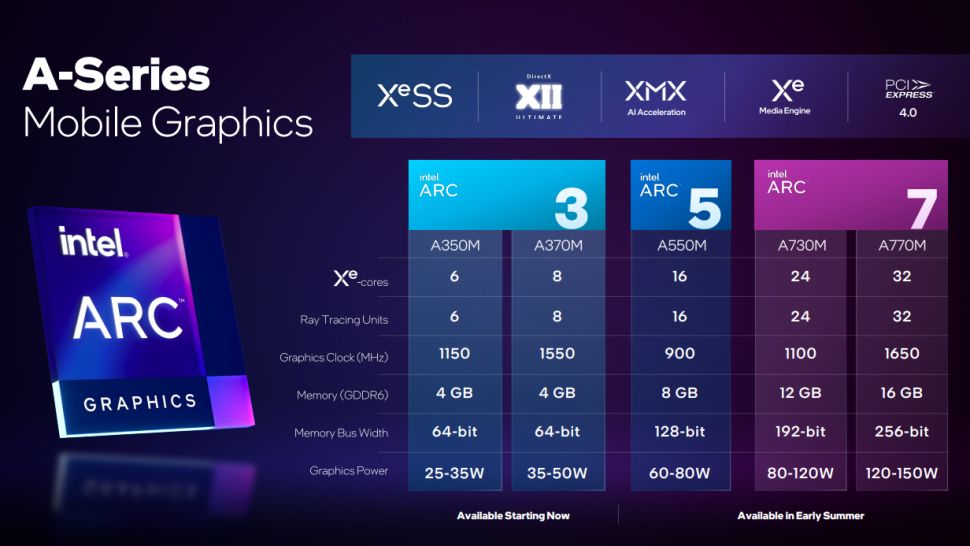
And well… that’s it. No desktop graphics cards were launched, but we did get a hint at what’s to come, with a ‘one last thing’ moment during the launch event where we got a render of what Intel’s upcoming desktop graphics card will look like.
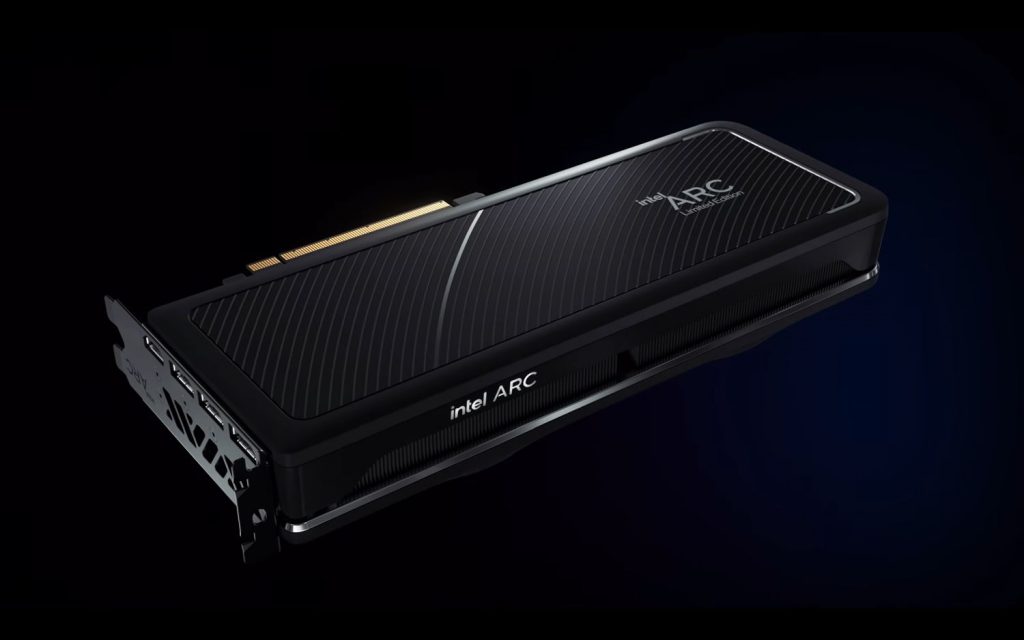
These laptop GPUs seem great but how does it perform?
It’s the million dollar question when any new graphics card debuts of course, which is can it actually perform? Well on the surface, it seems that there should be some significant gains here when compared to its previous lineup of Intel Iris Xe integrated graphics, with Intel Arc 3 promising at least double the performance of Iris Xe.
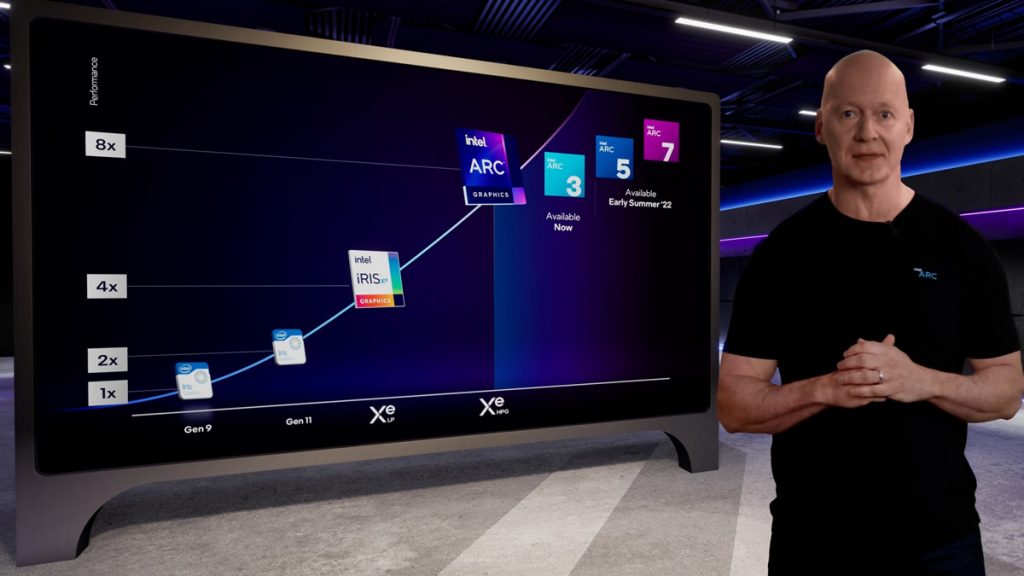
Intel also claims that you should be able to comfortably play eSports titles such as Valorant and Rocket League at high settings and expect a good time, while even older triple-A titles such as GTA V and Doom Eternal should be more than playable at 1080p with medium/high settings. Curiously though, Intel only compared its Arc A370M chip to the integrated Iris Xe graphics on the Intel Core i7-1280P rather than other entry-level GPUs from the competition. There was also no details on the performance numbers we can expect from its Intel Arc 5 and Arc 7 chips.
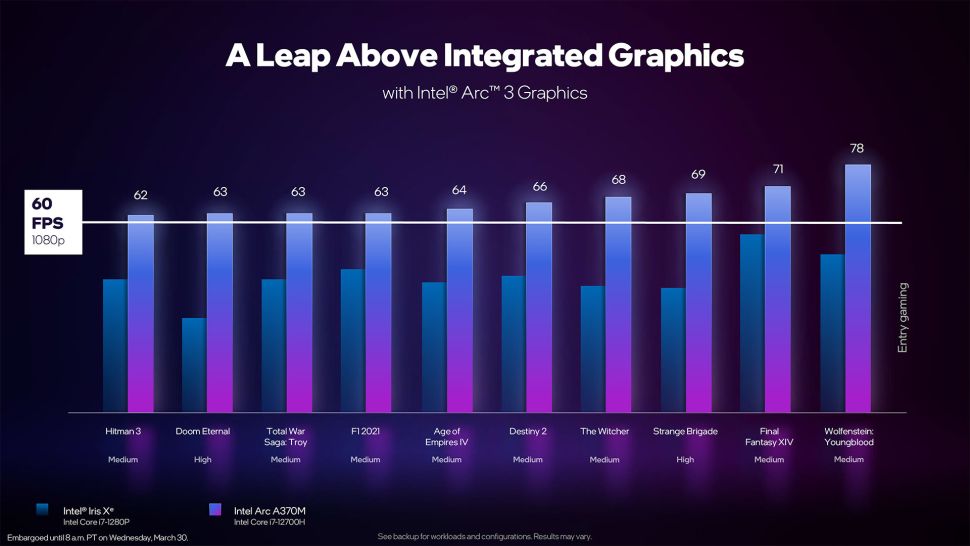
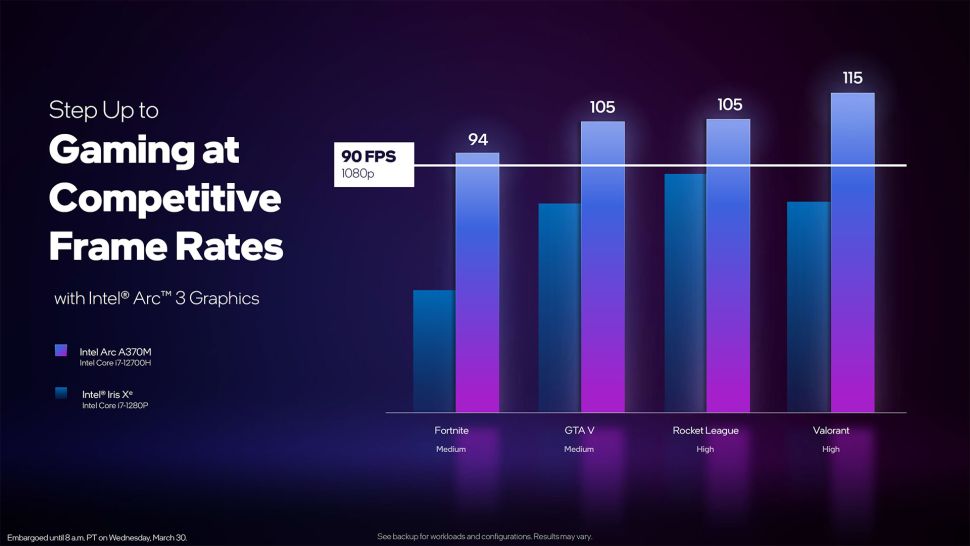
Since then, people who have gotten their hands on laptops with an Arc A350M, the most entry level graphics offering from Intel, have found that it’s not exactly a powerhouse GPU. In fact, early benchmarks from these users show that it’s not powerful enough to beat the NVIDIA GTX 1650, an entry level laptop graphics card from early 2019. It does seem to be much more powerful than an NVIDIA MX450 though. Considering that the Arc A350M is rated for a similar power consumption with the MX450, it could be a solid option in productivity laptops but is perhaps too weak for even the most budget of gaming laptops.
We did also get a preview of what could be the desktop Intel Arc A770, its supposed flagship discrete graphics card. A Geekbench 5 benchmark using said card has cropped up, with 512 compute units and a 2400MHz clock speed. It seems as though in OpenCL tests at least, it gets similar performance to an NVIDIA GeForce RTX 2070, with a score of 85,585 to the latter’s 85,818. That’s not great to say the least, considering the NVIDIA GeForce RTX 3080 gets 181,000.
There could be a few reasons for this though, as the benchmark was run with an Intel Core i5-9600K, which may have been bottlenecking the GPU from its full performance. OpenCL benchmarks also don’t reflect gaming performance all that well, while a lack of driver support may be hurting the Arc A770 and even the aforementioned Arc A350M too. Prior to this, it was expected that Intel’s flagship graphics cards would compete alongside the likes of NVIDIA’s mid range chips from this generation.
One thing that will likely be a huge boost to gamers using Intel Arc graphics cards mobile or desktop though is Intel XeSS technology. First shown off during its Architecture Day last year, Intel Xe Super Sampling, or XeSS for short, is set to be their rival against the likes of NVIDIA’s DLSS. XeSS uses AI image upscaling technology along with neural networks to upscale image quality into a much higher resolution. This lets it run games at 4K, even though it’s technically rendering it at just 1080p.
It’s actually really hard to get your hands on Intel GPUs though
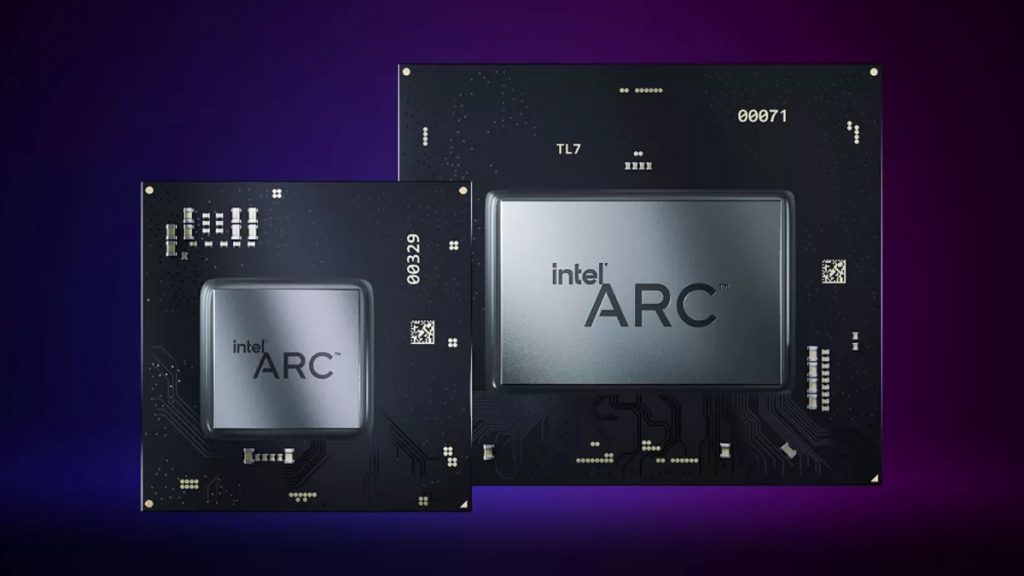
So in the build up to the launch of Intel Arc, they originally promised a Q1 2022 release for Intel Arc graphics cards. Eventually, Intel did kind of ‘launch’ it by then… on March 30, two days before it became Q2 2022. And even then, it was only its mobile GPUs that were announced, while just its Arc 3 lineup was made available at launch, with Arc 5 and Arc 7 laptop GPUs set to arrive ‘by early summer’.
If it’s starting to seem like a paper launch, well it’s about to get worse for Intel. It took a week after its 30 March launch for Intel to finally announce laptops with Intel Arc 3 graphics cards in them going on sale. However, Intel later confirmed that these machines are only available in South Korea for now.
And it’s not like there’s a plethora of Intel Arc-powered laptops in Korea either. The only laptop available with an Intel Arc graphics card is the Samsung Book 2 Pro, with just one configuration featuring the Arc A350M too, alongside an Intel Core i7-1260P processor.
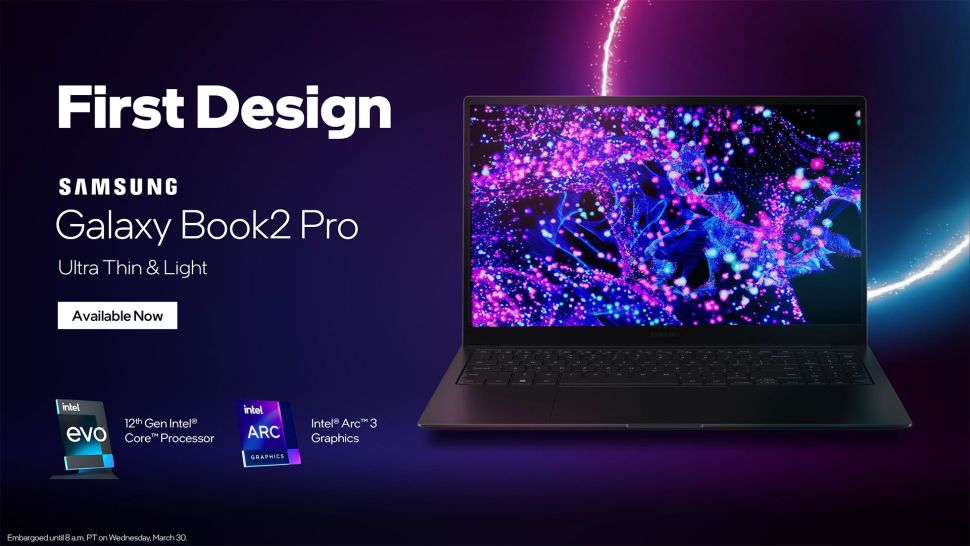
All in all, it really does look as though Intel may have dropped the ball in promising its Q1 2022 roll out of Intel Arc graphics cards. It’s now been three weeks since the Intel Arc launch event, and yet there’s still no word on if and when more laptops with Intel Arc 3 graphics cards will appear, let alone gaming options with Intel Arc 5 and 7.
At this point, it looks like we’ll only really be seeing the full slew of Intel’s graphics cards by the time summer rolls around. Or, judging from its Intel Arc mobile launch, on the second last day of summer. As a recap, the Intel Arc 5 and Arc 7 mobile GPUs are only set to appear by early summer, while their discrete graphics cards for desktops are also set to be launched by then. Hopefully it’s not another paper launch like its Intel Arc mobile reveal.
0 comments :
Post a Comment